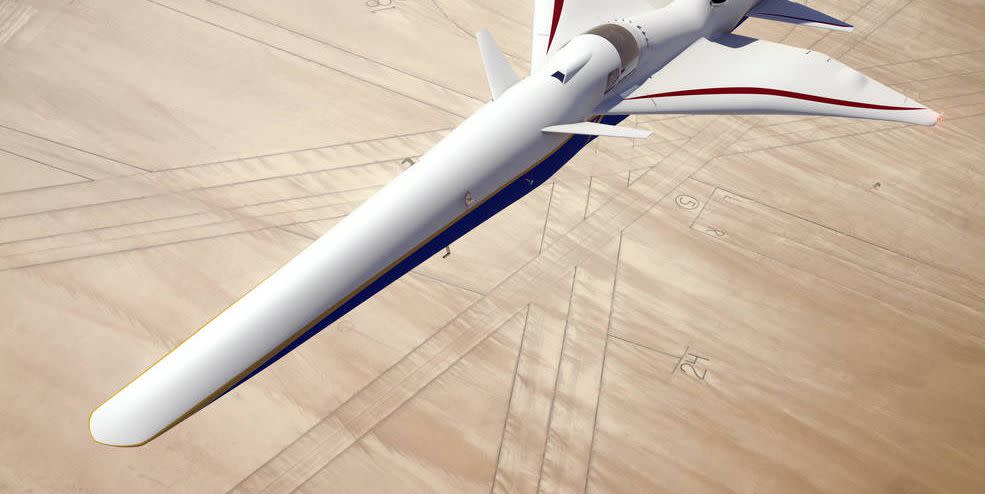Lockheed Martin Has Started Building NASA's X-59 Experimental Supersonic Jet

Lockheed Martin and NASA are poised to bring supersonic travel back to the commercial aviation industry.
Earlier this year, the manufacturing juggernaut was awarded a $250 million contract to develop tech for NASA's Low-Flight Boom program. Now, Lockheed has committed to a timeline for the maiden test flight of its X-59 Quiet Supersonic Technology (QueSST) aircraft, a demonstration plane that aims to reduce the noise generated when an aircraft breaks the sound barrier.
Faster-than-sound flight has been possible for decades. But supersonic planes like the Concorde were more or less limited to flying over oceans because of the loud sonic booms they make. Current laws prohibit supersonic planes from breaking the sound barrier over land.
The X-59, by contrast, emits a faint "thud" when reaching its apex speed of 940 mph, which the company says is no louder than the slamming of a car door. The aircraft has a cruising altitude of 55,000 feet-about 25,000 feet higher than your standard commercial airbus.
“This aircraft has the potential to transform aviation in the United States and around the world by making faster-than-sound air travel over land possible for everyone,” NASA Administrator Jim Bridenstine said in a press statement about the Lockheed deal. “We can’t wait to see this bird fly!”
To see how quiet this plane really is, NASA will conduct test flights of the X-59 above U.S. cities starting in 2021. The agency will send that data to regulators, which NASA hopes will compel to overturn some longstanding rules.
"Using this data," the agency writes, "new sound-based rules regarding supersonic flight over land can be written and adopted, which would open the doors to new commercial cargo and passenger markets to provide faster-than-sound air travel."
If NASA and Lockheed successfully overturn current regulations, they'd bring the first commercially operable supersonic plane to market since the Concorde, which retired in 2003. Like its famous predecessor, the X-59 has a long, slender design. According to Lockheed Martin's Peter Iosifidis, manager of the company's Low Boom Flight Demonstrator program, the angular design is paramount in helping the aircraft achieve max speed.
He said in a press statement:
"The long, slender design of the aircraft is the key to achieving a low sonic boom. As we enter into the manufacturing phase, the aircraft structure begins to take shape, bringing us one step closer to enabling supersonic travel for passengers around the world."
('You Might Also Like',)

